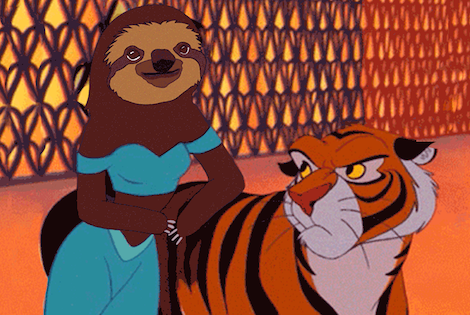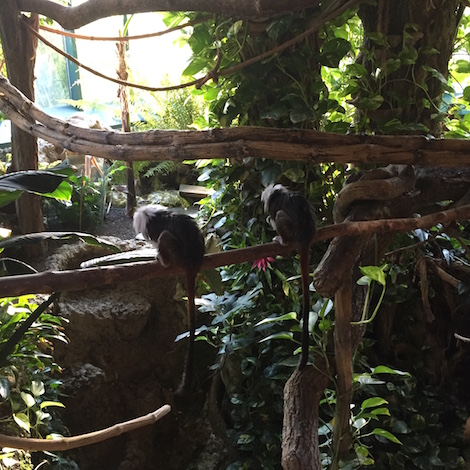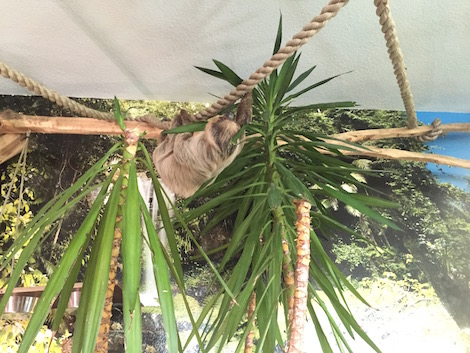| « 18 / 30 Halftime – 10 instructions | 16 / 30 Mental Maps » |
17 / 30 They were like animals
“We all should learn from sloths. You don’t have to be beautiful and you don’t have to do a lot to be adorable.” Maha Maamoun
What if Disney Princesses were sloths? This question was recently raised rather graphically by Buzzfeed editor Jen Lewis. It embraces some of the key issues of Maha Maamoun’s course on experimental video practice at the summer academy.

“When does the need arise to use animals or animal metaphors to talk about personal or political issues? How do we use animals as symbols or proxies for other subjects? And how does this use of animals help or delay our understanding of ourselves and others, and of the societies we live in?
The first week of Maha Maamoun’s course felt like an extensive material review of films, texts and artworks with animal appearances. The aim was to sensitize her students for the use and abuse of animals in contemporary art.
One of many examples is the documentary Nénette by Nicolas Philibert. Its protagonist is Nénette, a fourty-year old orang-utan living at the Jardin des Plantes in Paris. We see her in her glass cage looking silently back at the visitors, who comment on her looks and behaviour. As viewers we only see her, looking at us. The comments of the visitors come only from the off-screen space. Philibert omits to anthropomorphize his protagonist. At the same time he documents the different projections that the visitors read into her behaviour.
It becomes clear here that the animal is an indefinite, unstable and unpredictable being for us humans. Anthropomorphizing it is only the easiest way to cope with this indefiniteness. The same is true for ‘animalizing’ human relationships. It seems the animal oftentimes addresses indefinite relationships that cannot be addressed by other means.

A few days after watching Nénette on screen, I find myself in the zoo of Salzburg as visitor, looking at animals through glass windows. Maha Maamoun’s students swarm out to record the animals in their habitats. To be honest, I find many zoos depressing. You oftentimes can see how the animals are suffering or are just bored. Yet, the zoo in Salzburg is strangely open. At many of the compounds I wonder why the apes or flamingos don’t simply escape. They seem to like it there.

Robin from the Netherlands is fascinated by the zebras: there are eleven official theories why zebras have stripes and yet there is no final agreement why. He films their bodies in close-up, so that the bodies turn into indefinite movements. I am particularly fascinated by the names of the animals. Interestingly, in the zoo, most animals have two names attached to their compound: a chosen name and the name of their patrons. The local Jaguar car dealer for instance sponsored the jaguars. When do we give animals names? And why? Is giving a name to a being not the first step taking away its indefiniteness? Yet, is giving a name not also the first step to acknowledge it as a being? A name is never just a metaphor.


